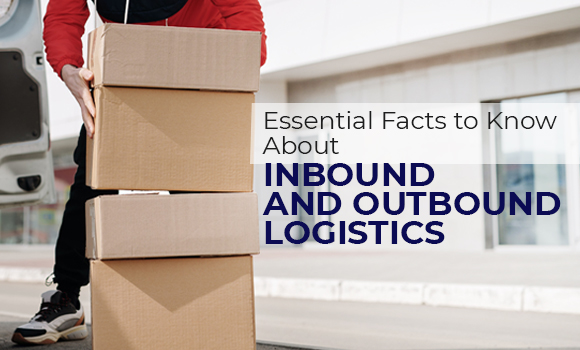One of the factors that contribute to a seamless supply chain is efficient logistics management. Processes must be optimized and in sync to facilitate cost-effective operations, ensure profitability, and establish customer confidence. Logistics operations are classified into two: inbound and outbound logistics.
Learn more about these two vital elements of a seamless logistics system and how they can help companies adapt to changes and overcome issues that may be encountered.
The Importance of Inbound and Outbound Logistics
Inbound and outbound logistics need to be optimized because of the important roles they play in the supply chain.
Outbound logistics has an important role in building customer relationships as it helps establish satisfaction and loyalty. Inbound logistics on the other hand contribute to the success of outbound goals. These two processes work hand in hand so it is not ideal to focus on the optimization of one process without ensuring the efficiency of the other.
A Closer Look at Inbound and Outbound Logistics
Inbound Logistics
Inbound logistics is a process that involves the transport of raw materials, supplies, and finished goods from a manufacturer to a warehouse, fulfillment center, or retail store. It directly affects outbound logistics processes as it is responsible for ensuring the availability of raw materials and goods as needed. Inbound logistics is more focused on the efficiency of inbound operations and not necessarily just about the transport of materials and goods from one point to another.
Inbound logistics is usually involved in the following:
- Materials sourcing
- Purchase of finished products
- Receipt of goods at a warehouse or distribution center
- Management of incoming materials or goods
- Preparation for outbound logistics processes
Outbound Logistics
Outbound logistics is another process that refers to end products that leave warehouses and distribution centers to be moved to the next location in the supply chain. While inbound logistics focus mainly on inbound operations, outbound logistics play a critical role in ensuring that products reach the final destination according to plans. Usually, the shipping activities involved after a customer placed its order are among those included in outbound logistics. Some of these are:
- Order processing
- Order packing
- Product picking
- Delivery of finished products
How do Inbound and Outbound Logistics Differ
Both inbound and outbound logistics are involved in the transport of goods. Their main difference is the direction in which goods flow for manufacturers and retailers.
Outbound logistics is the process that applies to manufacturers wherein truckloads of finished products are sent to warehouses or distribution centers.
Inbound logistics applies to retailers wherein the freight load from manufacturers is distributed to stores.
ALSO READ: 7 INTERESTING LOGISTICS INDUSTRY OUTLOOK FOR 2022
It is Essential to Optimize Your Inbound and Outbound Logistics Processes
Effective supply chain management helps optimize the journey of products whether they are inbound logistics or outbound logistics. Partner with a logistics management company that can provide cost-efficient solutions to help you optimize your operations.
Send us a message today so we can assist you in your operations whether they require inbound logistics or outbound logistics.


